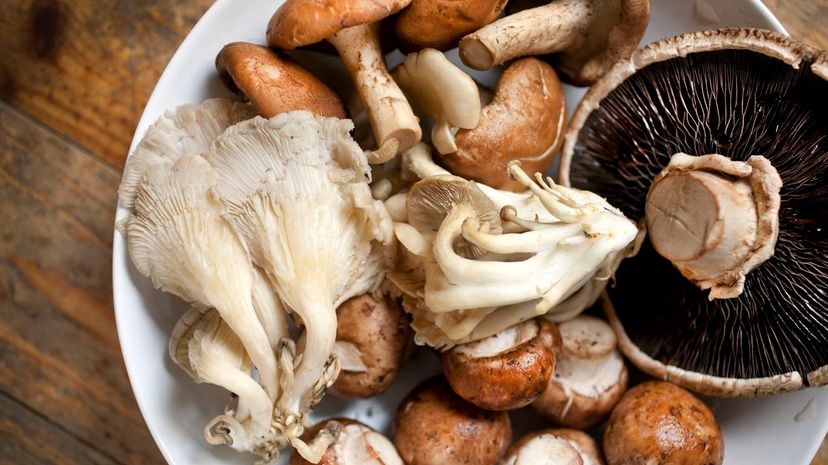
About This Quiz
If all you know about fungi is that they cause athlete's foot or ringworm, you're missing out. One of the five kingdoms of life, fungi include around 150,000 known species and an estimated 5 million more just waiting to be classified. While the name comes from the Latin for mushroom, fungi range from those umbrella-capped mushrooms you see in storybooks to nearly microscopic single-celled organisms and so much more.
While non-scientists might be tempted to lump most fungi in with plants—after all, they both mostly grow in the dirt—fungi actually split off from plants around a billion years ago, so they've had plenty of time to evolve, forming unique species with their own distinct properties compared to plants.
But why should you care about fungi at all? First, they play a critical role in the decomposition process, reclaiming the minerals left behind by dead plants and animals and returning them to the earth. Second, they have formed symbiotic relationships with many plants and animals, helping one another survive in tough conditions. Third, various forms of fungi have long been used to treat illness and maximize human health, both in the form of traditional folk cures and modern medical treatments like chemotherapy. Finally, many fungi are edible, and are simply delicious, serving as the perfect side or even a main course in some recipes.
Think you can identify at least 11 species of fungi? Prove it with this quiz!

Officially named Agaricus bisporus, White Button Mushrooms or Common Mushrooms are one of the most widely-consumed fungi in the world, especially in the United States. If you plan to forage for these fungi, however, beware; they look eerily similar to the poisonous Deadly Angel species when you see them in the wild.
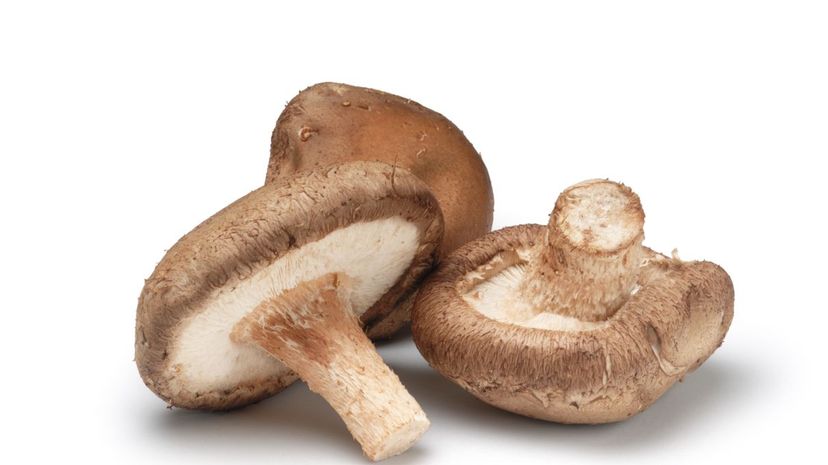
Native to eastern Asia, Shiitake mushrooms are hugely popular in Asian cuisine. They may be known as donko in Japan or Black Forest mushrooms when used in Chinese dishes. This fungi is umbrella-shaped, ranges from light tan to deep brown and has a sturdy white stem.

Pleurotus ostreatus, or Oyster Mushrooms, feature a fan-shaped cap and a thick, short stem. They range from gray to brown, and their caps measure between 2 and 10 inches across. Widely used in cooking, especially in Asian dishes, these mushrooms are also useful at reducing air and soil pollution, similar to the way oysters help minimize water pollution.
Advertisement
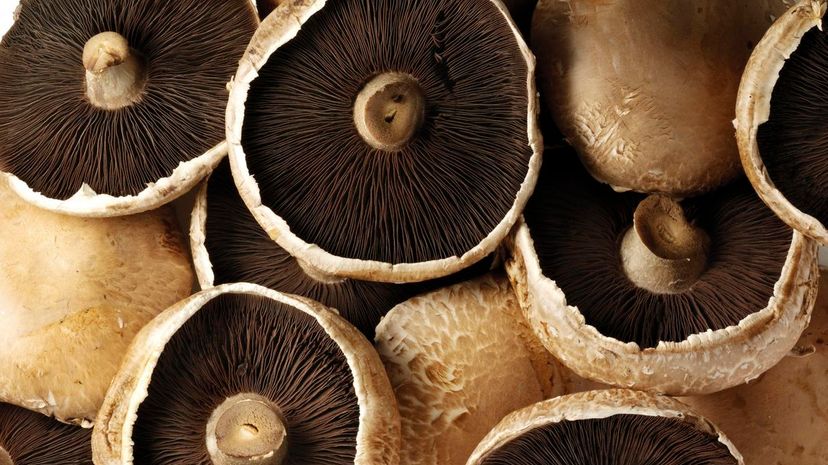
Thick and meaty Portobello Mushrooms are a popular burger substitute for vegetarians. They aren't a unique species but are simply Cremini Mushrooms that have been allowed to age until they reach 4 to 6 inches in diameter and darken to a deep brown.
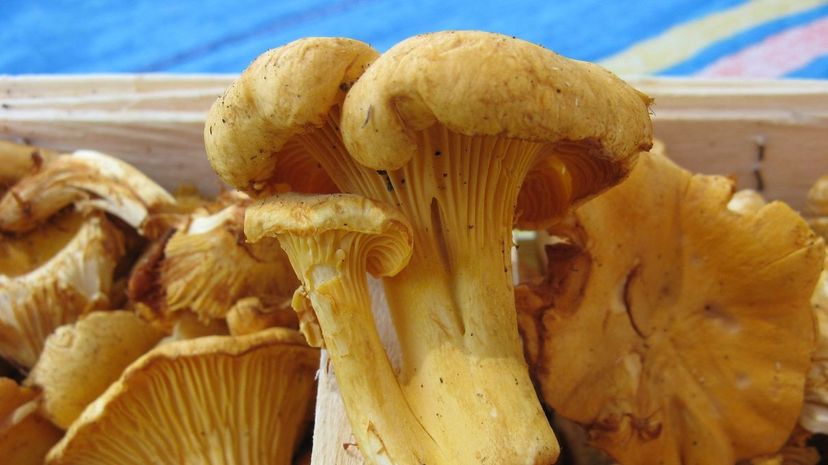
One of the most popular wild mushrooms, Chanterelles feature a funnel or cup shape and comes in shades of orange, white and yellow. You can identify them by taking a peek underneath - their gills run almost all the way down the stem. This fungus grows wild in many parts of Europe and North America.
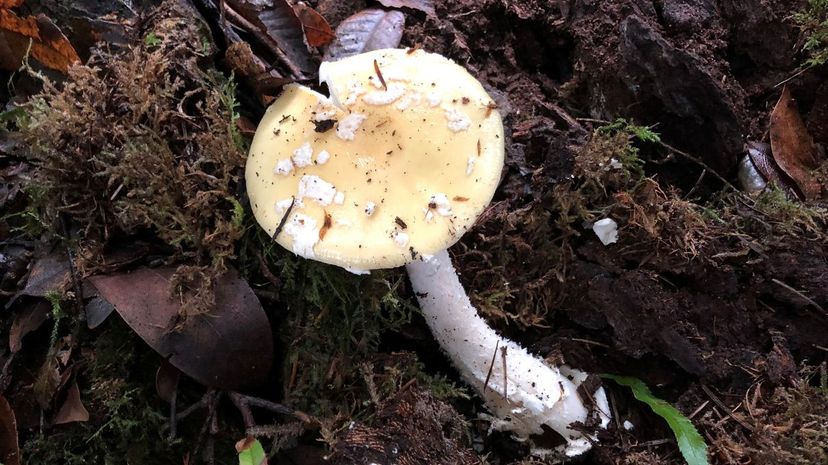
Beware of the Death Cap, a fungus that is poisonous even when cooked. Consuming just half of a small Death Cap is enough to kill an adult, and the majority of mushroom poisoning deaths are linked to this species. You can spot Death Cap by its greenish top and honey-sweet smell.
Advertisement
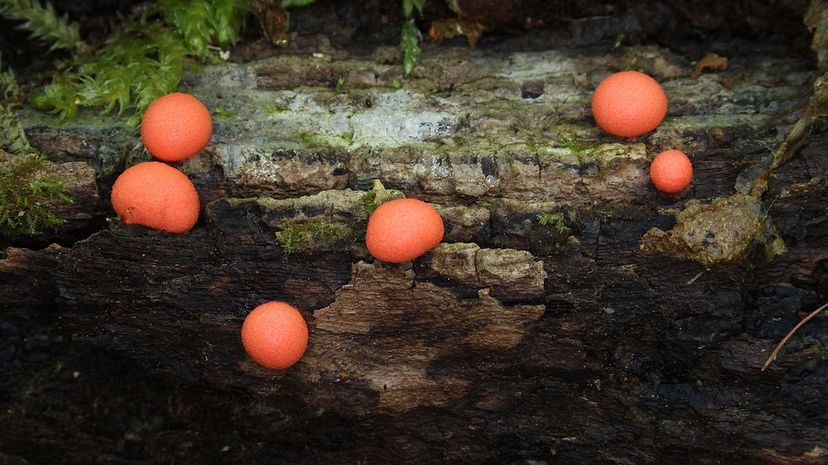
Wolf's milk, or Lycogala epidendrum, is a small form of fungus consisting of cushions with a rough or warty texture. Each cushion is less than half an inch in diameter and ranges from pink to brown. The fungus gets its name from the thick pink paste found inside when the fungus is newly formed.
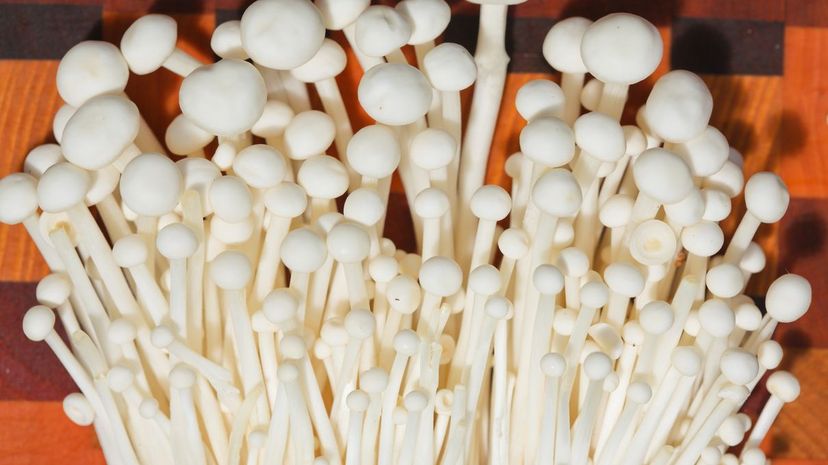
Hugely popular in Japanese dishes, Enoki, or Enokitake comes in both farmed and wild varieties. Farmed Enoki is long, thin and white, while wild versions are much darker, shorter and thicker.
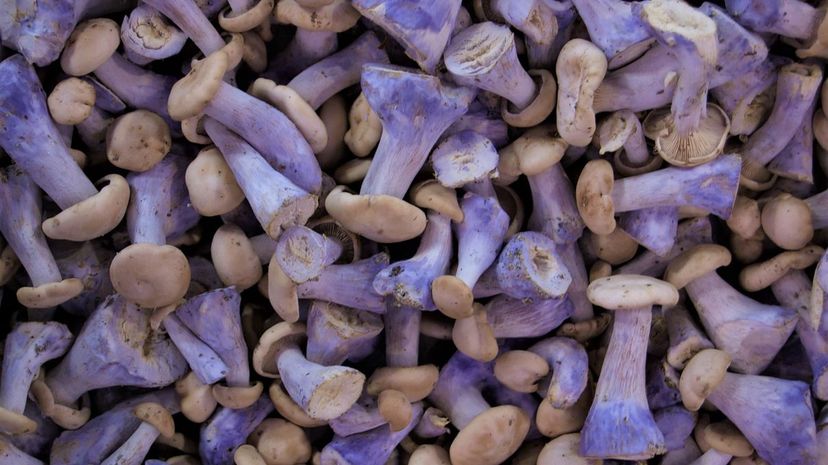
There are two main species of Blewit — Wood and Field — and while both are edible, this fungus can trigger allergies in some people. Blewit has a strong flavor, a citrus-like scent and comes in shades ranging from tan to light purple.
Advertisement
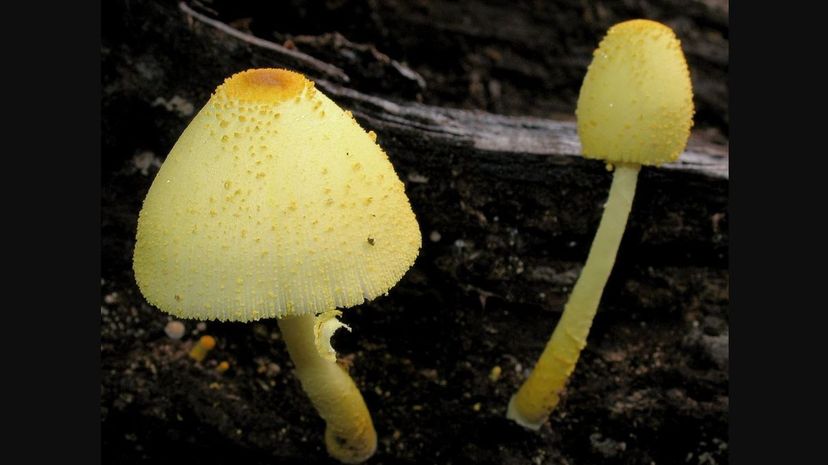
Its official name is Leucocoprinus birnbaumii, but you can call it the Flower Pot Parasol. This fungus starts off bright yellow but fades as it ages. It has a smooth cap with grooved edges, and while it only grows wild in the tropics, many gardeners grow this species in greenhouses, which has helped it earn its common name.
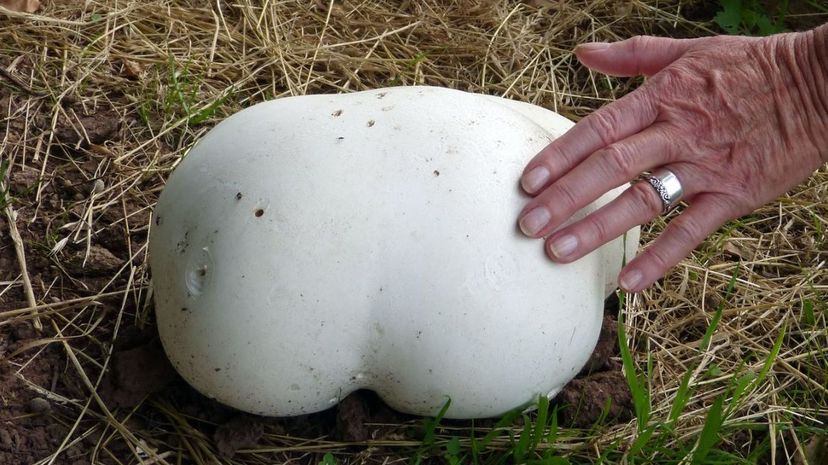
When it's young, the Calvatia gigantea, or Giant Puffball, has pure white edible flesh. Over time, the fungus grows as large as 20 inches in diameter, but its flesh becomes inedible as streaks of brown or green develop. This species grows in forests and meadows within temperate zones, and some very large Puffballs can weigh as much as 40 pounds.
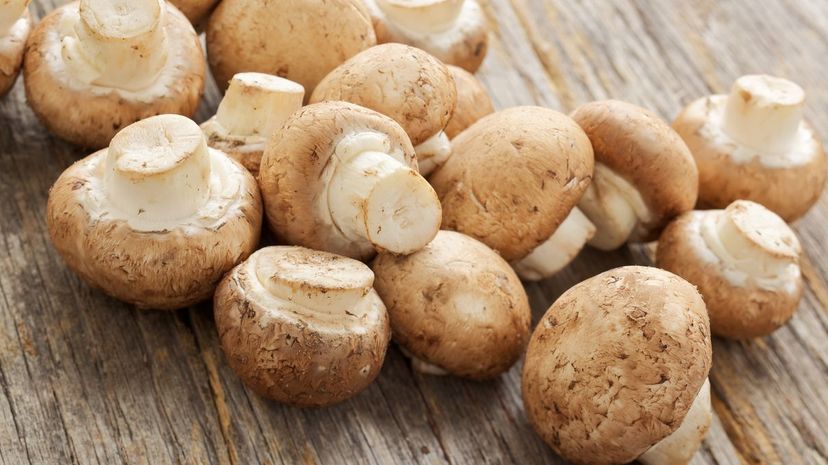
Crimini mushrooms are just the brown version of the Common White or Button Mushroom. In fact, all common mushrooms were brown until 1926, when a Pennsylvania farmer was able to develop a pure white hybrid. When the Cremini is allowed to grow to maturity, the resulting large, meaty mushroom is known as a Portobello.
Advertisement
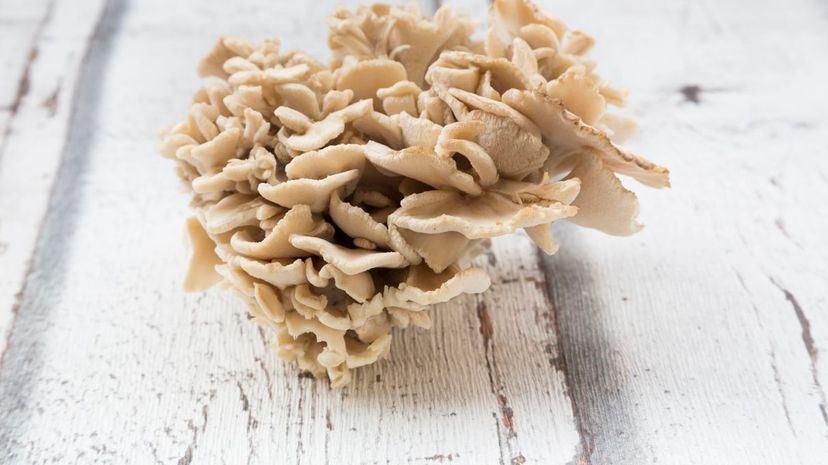
Maitake, or Hen-of-the-Woods, grows in clusters along the base of trees, a characteristic of bracket fungi. Sometimes known as the Signorina or Sheepshead Mushroom and called the Grifola frondosa by scientists, Maitake has scalloped edges and can range from tan to deep brown.
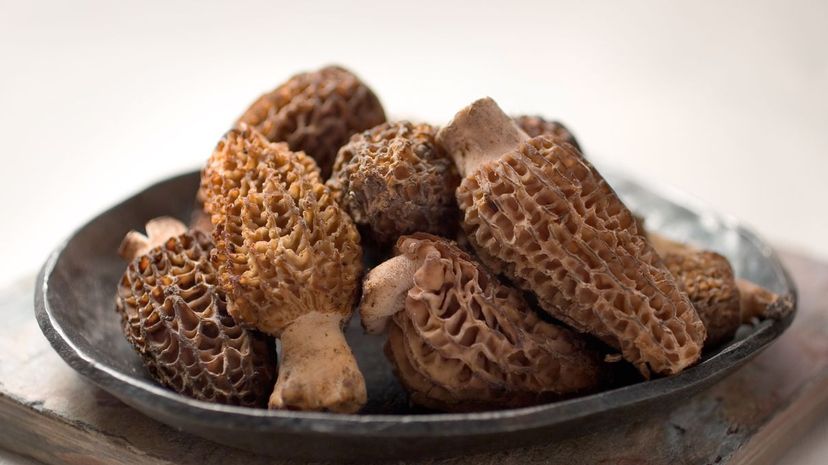
Morchella, or Morel Mushrooms, are so tough to farm that the wild species is a highly sought-after delicacy. You can recognize the Morel by its honeycomb shape and blonde to gray coloring. When added to food, Morels lend a meaty, nutty flavor, but beware of false morels — which are reddish-brown or purple and have folds rather than a true honeycomb.
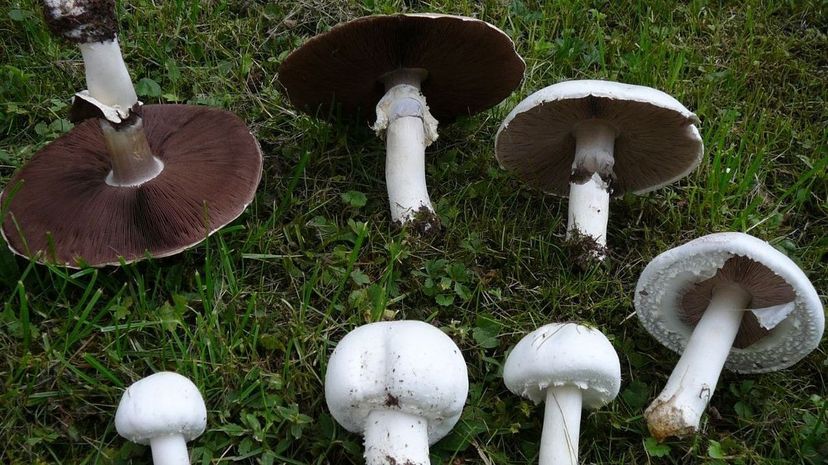
Agaricus arvensis, or the Horse Mushroom, has a thick cap measuring 4 to 10 inches across. It ranges from white to yellow, and the white gills underneath darken over time to red or brown. While you may be able to spot this mushroom thanks to its anise odor, you could also look for signs of bruising — because when the Horse Mushroom is damaged, the bruised or cut area appears yellow.
Advertisement
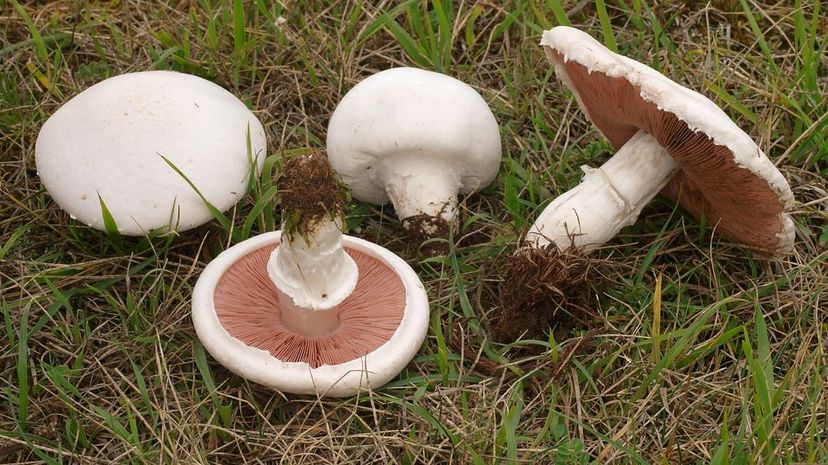
Nicknamed the Pink Bottom, the Field or Meadow Mushroom grows on a stem up to 4 inches tall. The cap is white and ranges from 2 to 4 inches across, while the girls underneath fade from pink to brown over the years. While you can eat this fungus, use caution, as it closely resembles some toxic species.
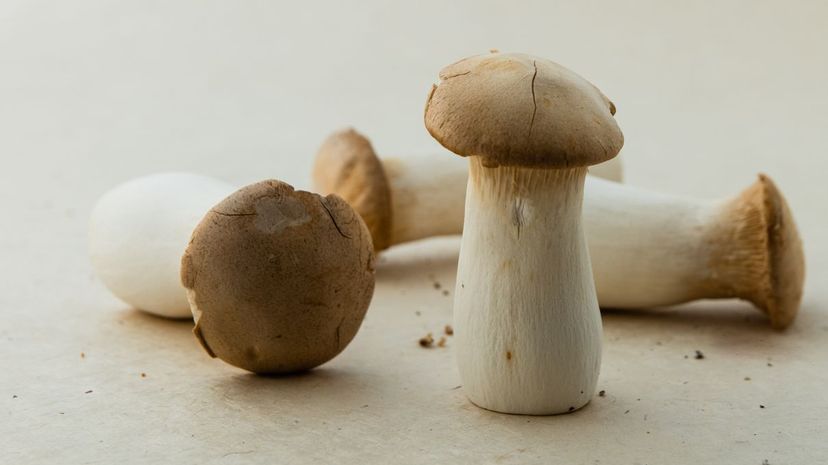
Popular in Asian cuisine, the Pleurotus eryngii — also known as the King Trumpet or French Horn — has a small tan cap sitting atop a very thick white stem. Unlike most mushroom species, the stems on the King Trumpet are relatively firm, so they are frequently eaten along with the cap.
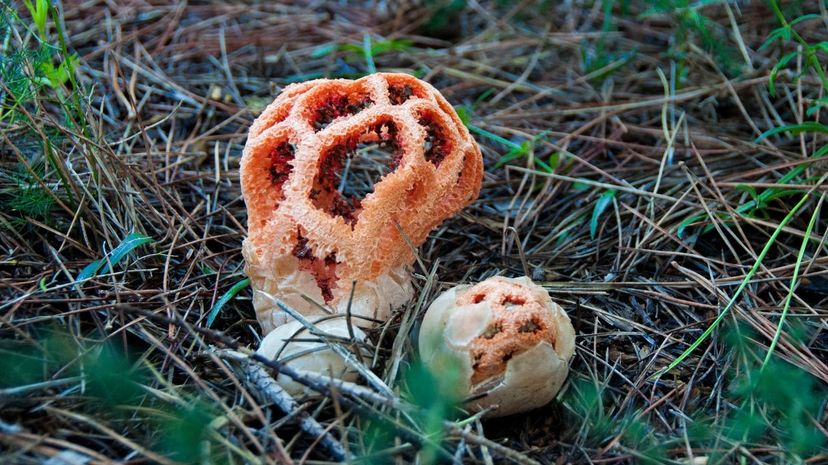
The Latticed Stinkhorn really earns its name, because it has a strong smell of rotten meat! Known among scientists as Clathrus Rubber, this fungus is made up of interlocking branches that form a ball or oval roughly 8 inches in diameter. Commonly pink or red, it starts off as a white or gray egg-shaped structure before transforming into its familiar lattice design.
Advertisement
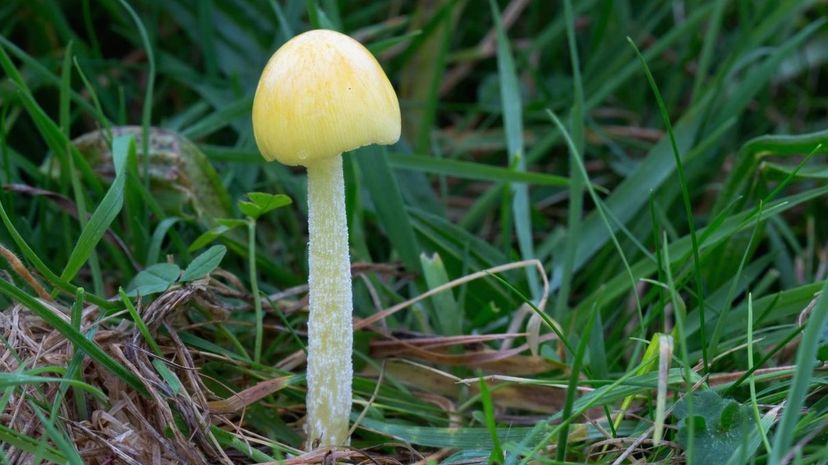
Yellow bolbitus or Yellow Fieldcap is an inedible mushroom — mostly because it usually grows on animal dung or fertilizer. It starts as a yellow egg-shaped form before flattening out to form a yellow cap atop a white stem.

Conocybe apala is commonly called White Dunce Cap because it looks a lot like the typical headgear seen on those students sitting in the corner of the classroom. The hood-shaped top is silver or cream in color, concealing red or rust-colored gills underneath. In the summer, this fungus with its tall, thin stem can quickly take over a lawn.

We don't blame you if you run away screaming after stumbling upon this fungus in the woods. Known as the Bleeding Tooth Fungus, this species ranges from white to beige and releases a thick red liquid that looks a lot like blood. Despite its look, it isn't actually poisonous, but it's so bitter you probably wouldn't want to eat it.
Advertisement
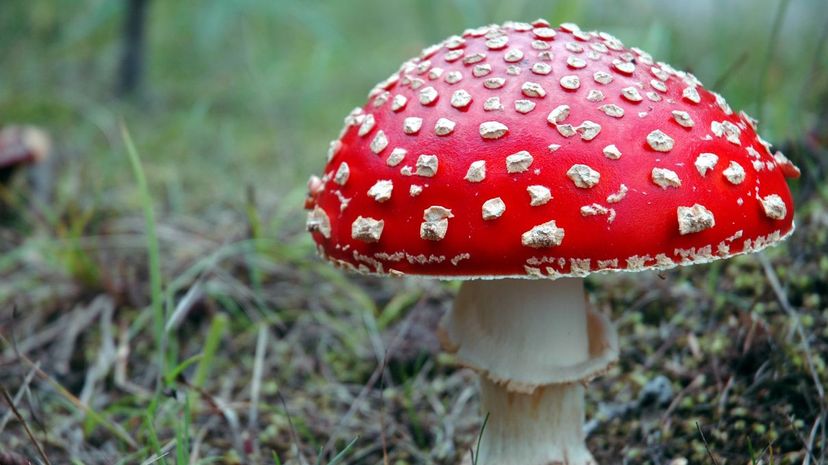
Fly Agaric gets its name from the fact that it was once used as a pesticide to keep house flies in check. Though it looks like something out of a fairytale thanks to its red cap with white spots, this species is incredibly toxic to humans, so steer clear if you happen to spot one.
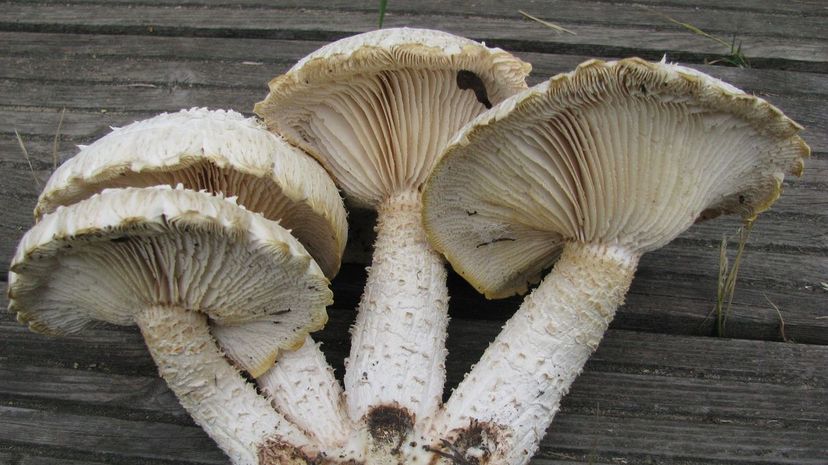
Because it commonly grows on wooden railroad ties, Neolentinus lepideus has earned the nickname Train Wrecker. While this cream or brown mushroom isn't exactly poisonous, it's known for leeching chemicals out of the ground or nearby wood, which can make it toxic to humans if consumed.
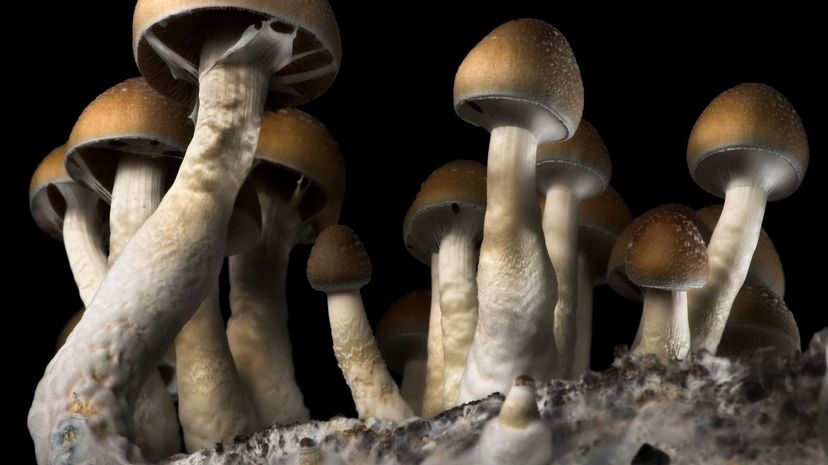
Fans of Psilocybin Mushrooms may simply call them 'shrooms, but they are more commonly called Magic Mushrooms. Thanks to psychoactive compounds found in this fungus, it has been used in religious ceremonies since the days of ancient Egypt. Rock art from the Stone Age also shows ancient people imbibing, as do stone sculptures from pre-Colombian South America.
Advertisement
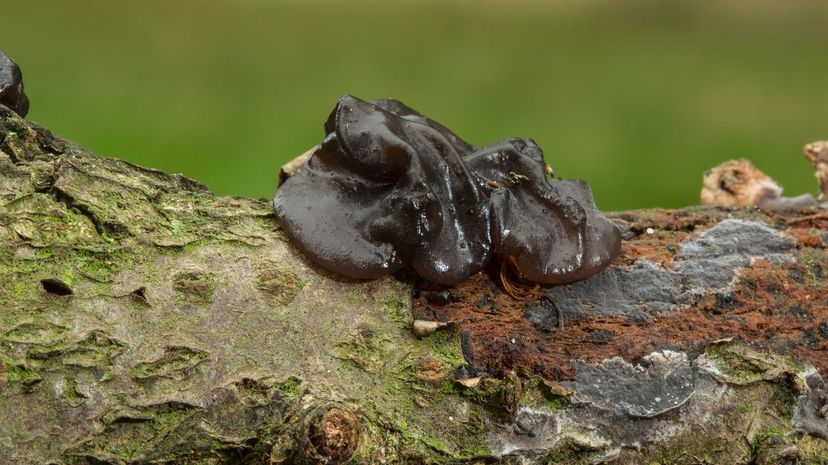
Black Witches' Butter, or Exidia glandulosa, consists of gelatinous blobs that grow in clusters. While black when moist, they shrink and fade to brown when they dry out. And while they are tasteless — not to mention unappetizing — you can safely consume this fungus in most cases.
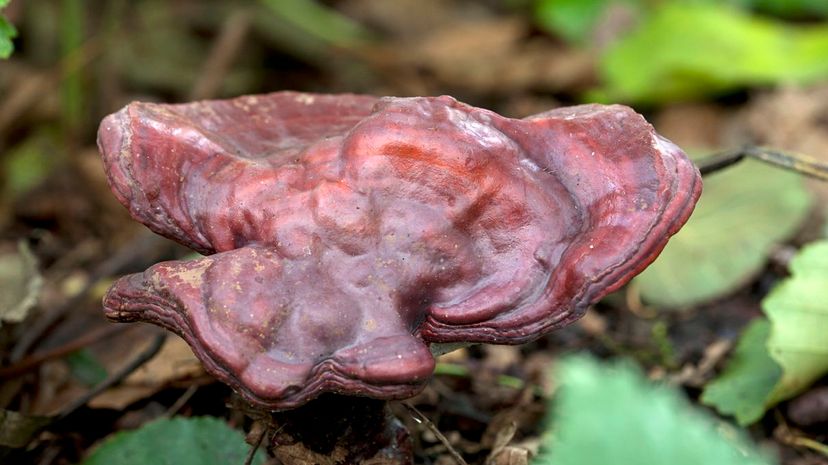
Known as Reishi Mushrooms in Japan and Lingzhi Mushrooms in China, Ganoderma lucidum is consumed both in cuisine and in many traditional medicines. You can spot this fungus thanks to its kidney-shaped red cap, as well as a unique lack of gills on its underside.
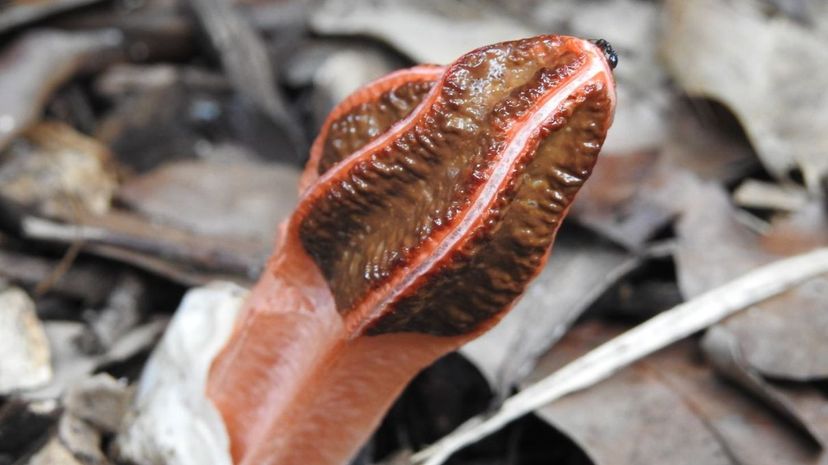
Lizard's Claw or Lantern Stinkhorn has a unique shape, even for a fungus. It consists of a red stem with a series of arms, which can join together to form a single spike or peel away from one another to spread into a star shape. Despite its odor, which resembles sewage or rotting flesh, this fungus is considered a delicacy when it is young.
Advertisement
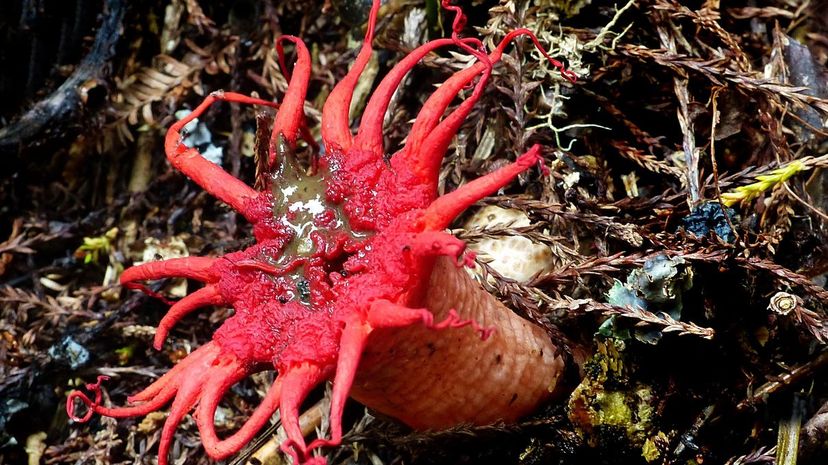
Aseroe rubra, or Anemone Stinkhorn has a sturdy white stalk, a red, star-shaped cap ... and a gross layer of brown goo coating the top. If its appearance isn't enough to scare you, breathe in deep to take in its dead animal scent.
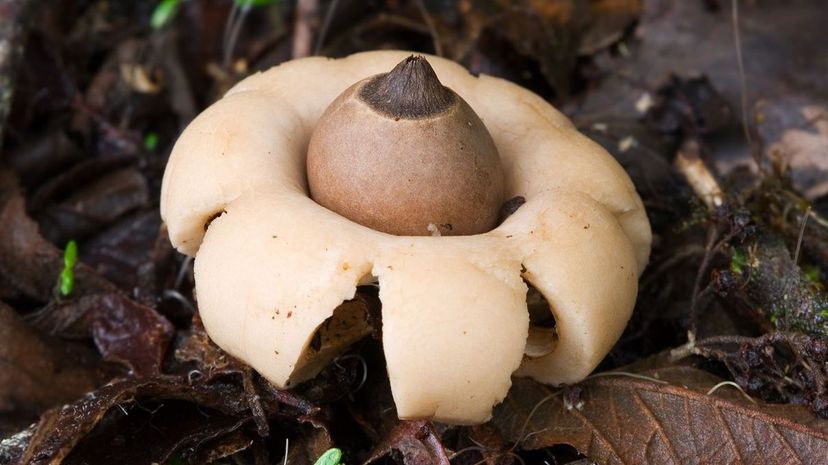
Despite looking like something George Lucas dreamed up for the moon of Endor, Rounded Earthstar is actually a real fungus found right here on Earth. It consists of two layers, including an egg-like inner layer and an outer layer that separates and spreads away from the egg-like center to form a flower-like surrounding.
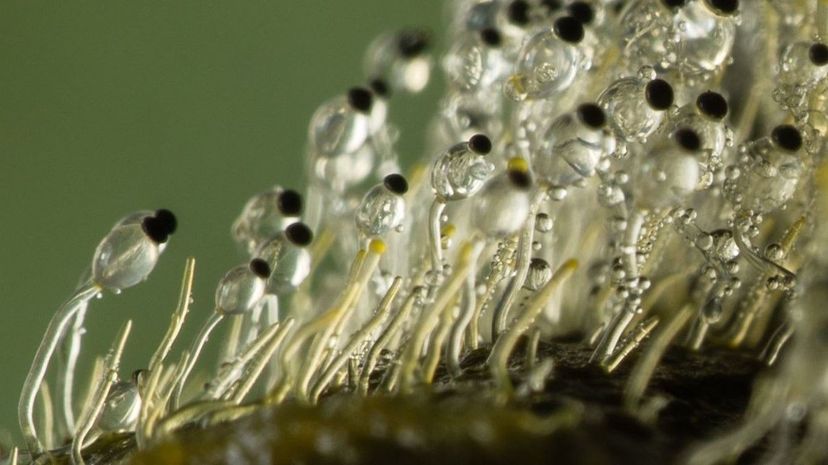
Sorry cheetahs, but Pilobolus crystallinus is the fastest organism on Earth. This fungus is only around 1 inch high, but it shoots its spores at speeds up in excess of 240 mph. When animals consume these spores, the fungus grows on the creature's waste, earning this species the very appropriate name Dung Cannon.
Advertisement
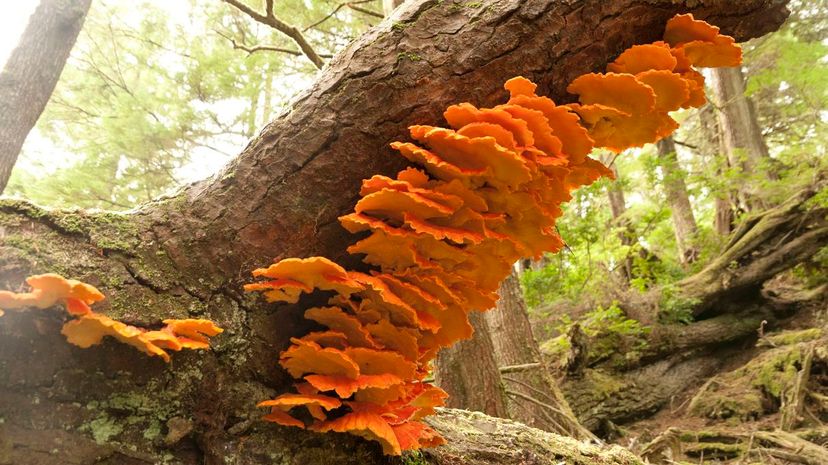
Chicken-of-the-Woods or Laetiporus grows along the trunk of a tree like a series of shelves or brackets. This fungus, which ranges from yellow to orange, gets its name from the fact that some say it tastes like chicken, but beware that it can also cause an allergic reaction in some people.
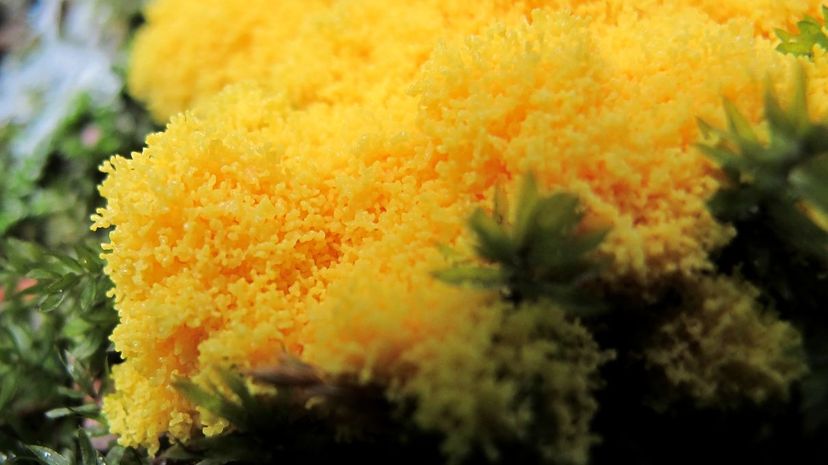
Though it isn't usually classified as a fungus anymore, Slime Mold was considered part of the Fungi Kingdom for so long that many still mistakenly misclassify it. Made up of single-celled organisms that can live alone or join together, Slime Molds start off yellow before turning hard and gray, then crumbling into a fine brown powder.
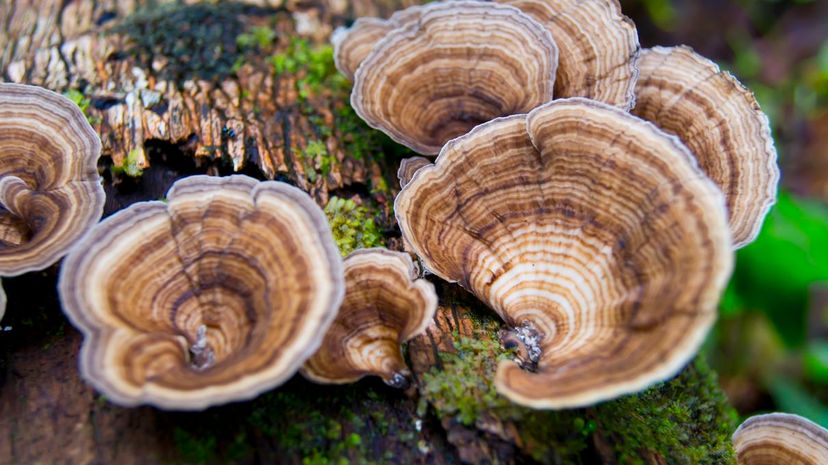
It might look like the backside of a wild bird, but Turkey Tail Fungus doesn't taste like fowl, though it is edible. This species, which goes by the scientific name Trametes versicolor is easy to spot because it features concentric circles of color along the top, which has wavy edges and a velvety texture.
Advertisement
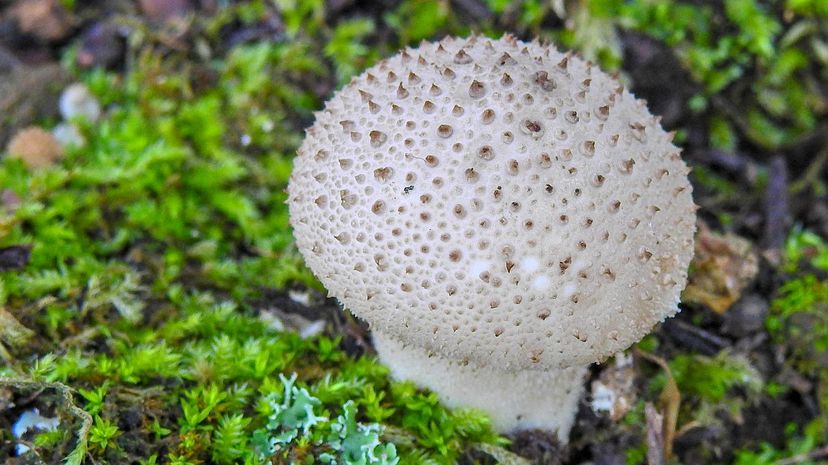
Lycoperdon perlatum, or Gem-studded puffball, consists of a round head and a fat white stalk. Despite its name, the bumps on the head of this fungus are made up of spikes, spores and warty projections. Though this species is edible, it looks an awful lot like some toxic fungi, so should only be collected by experts.
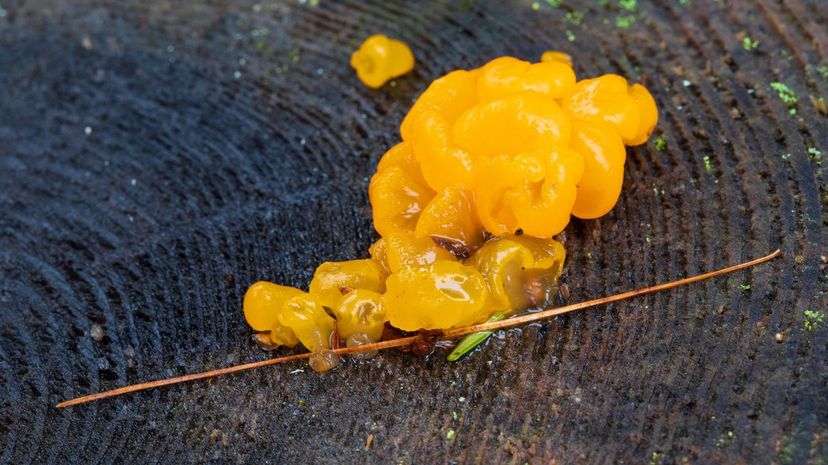
Golden Jelly Fungus, or Tremella mesenterica, is a gelatinous yellow or orange clump that grows on newly-fallen branches or dying trees. Found all over the world, it shrivels up during dry spells, only to moisten back up after periods of rain, giving it a Jell-O-like appearance.
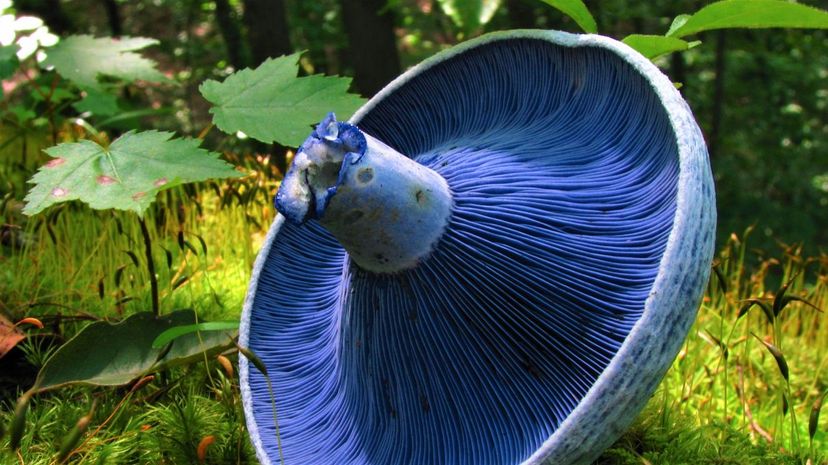
Thanks to its purple or blue hue, it's hard to confuse the Blue Milk Mushroom, also known as Indigo Milk Cap, with other fungi. Not only is the exterior of this species blue, but it also oozes a blueish-liquid or paste when damaged. It's found all over the world, and yes, this fungus that scientists known as Lactarius indigo is edible.
Advertisement
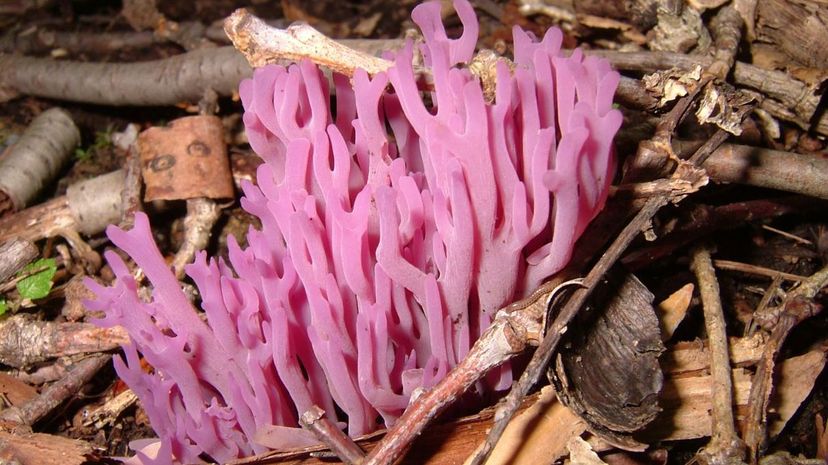
It looks like the coral you find under the sea, but Coral Fungi actually grows right here on land. Its ridged branches grow in clumps or spires within forests or any mossy area. This species consists of vibrant colors like blue, red or pink and is almost always edible if you're looking to add a pop of color to your dish.
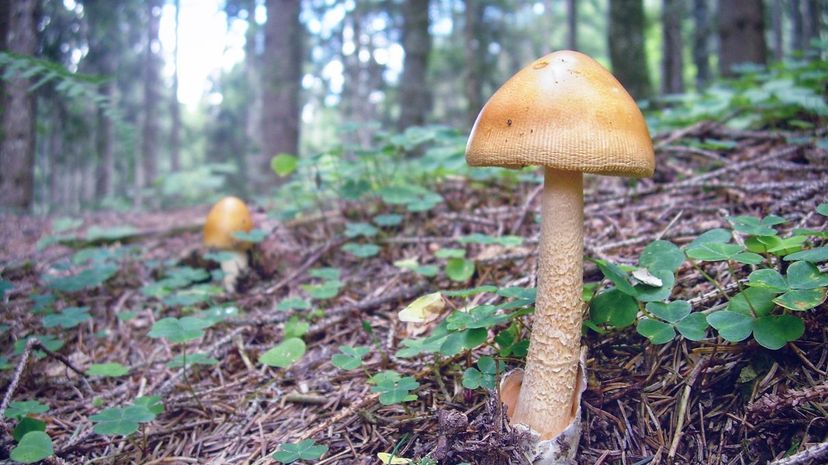
Said to be a favorite of ancient Roman rulers, Amanita Caesarea is casually known as Caesar's Mushroom. It has a smooth orange cap over yellow gills and stem, and while this species is edible, it closely resembles the Fly agaric, which is most definitely not edible for anyone looking to live another day.
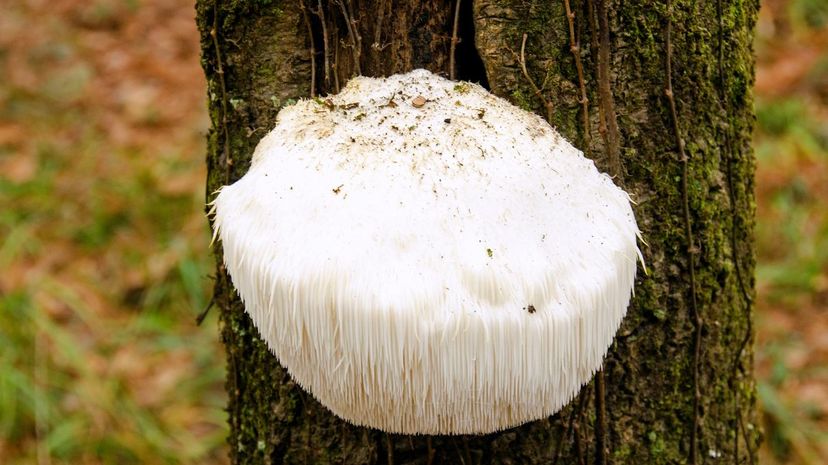
The long spines of Lion's Mane or Bearded Tooth fungus droop down in a large clump to resemble a mane or beard of hair. Officially known as Hericium erinaceus, the presence of this fungus is usually a good sign that the tree it is growing on is dying or dead. Considered a gourmet delicacy, this fungus grows in North America, Europe and Asia.
Advertisement
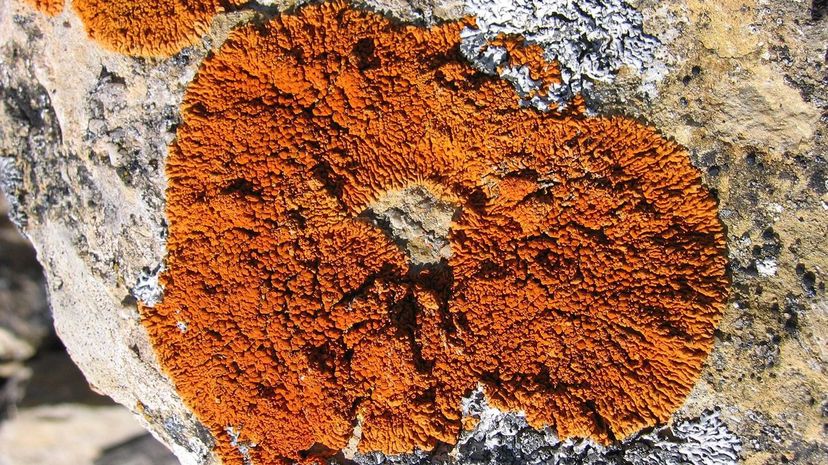
Xanthoria elegans, or Elegant Sunburst Lichen, grows on every continent but Australia, including Antarctica. While it's impressive for its bright orange to red coloring, this fungus is also used to date rock and soil layers — largely because it only grows about half a millimeter each year during its first century of formation.